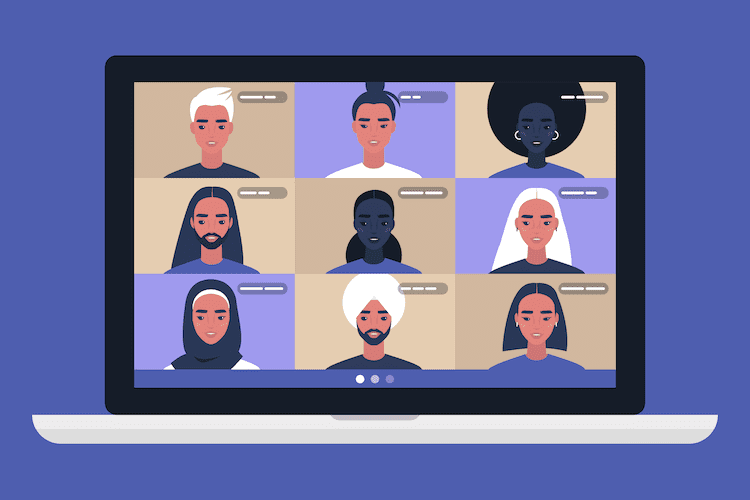Six months into COVID-19, organizations are moving away from work-from-home concerns to focus on employee re-entry, with an eye toward talent engagement and retention — all amidst newly heightened awareness around diversity, equity and inclusion. What a challenging, unique and opportune time for HR and talent professionals to rise to the occasion.
So, what are the key concerns in this transition journey, and how should organizations navigate them in light of so many changes? Following, let’s explore the key employee re-entry issues of inclusion, engagement and talent support and offer three pragmatic, culturally appropriate steps to ensure long-term development, inclusion and retention for organizations employing a diverse, multicultural workforce.
A few key topics to keep in mind:
- Assessing individual needs of employees in re-entry and beyond
- The impact of remote working conditions for multicultural employees — emotional and environmental factors
- Appropriate messaging to support inclusion
- Investing in training and upskilling to meet specific needs of multicultural employees
Dealing with the downturn
Faced with the likelihood of a prolonged recession, staff reductions loom for many organizations. The immediate-term effects of downsizing are tangible, but the longer-term fallout will take time to surface. Increased stress and burnout can erode morale and decrease productivity. Too often, top employees are motivated to seek better growth opportunities elsewhere, and, as unhappy workers depart, companies also face the prospect of reputational damage in the talent marketplace.
In pre-pandemic times, investing in your employees was a sure way to unlock their potential and increase retention. In the new normal, in which Gartner research estimates that 48 percent of employees will likely work remotely at least part of the time, compared with 30 percent pre-pandemic, new skills, such as digital dexterity and digital collaboration, will be required. As employees strive to adapt, it’s more important than ever not only to support them, but to acknowledge that some individuals, particularly those from multicultural backgrounds, are disproportionately affected by the ever-evolving challenges of the work environment.
Thoughtfully managing talent now is required for organizations to stay strong as they emerge from a recession — and for their long-term survival. According to an American Management Association blog post, “The bottom line is that while the recession will eventually end, the competition for talent is going to be a business challenge for the foreseeable future.” So how do you protect all of your high-value workers and position your company in the future as a desirable place to work?
Are all employees really ‘in this together’?
First and foremost, acknowledge that just as not all groups or individuals will have experienced the pandemic interruption in the same way, neither will they adapt in lockstep to being back in the office. Patterns established while working exclusively from home may be hard to break; different distractions and, for some workers, fewer freedoms, can impact concentration and productivity. Of even greater concern: The inequalities that will result for many workers, from both tangible sources of stress and more nuanced cultural biases, can have severe effects on morale, productivity and engagement.
For example, the current unsettled environment can be especially disorienting to foreign national employees dealing with new stressors — worries about family members far away, the inability to travel home, concerns over a spouse’s visa status — in addition to any ongoing challenges related to language, interpersonal skills or cultural adjustment they may already be grappling with. Recently, a coaching client noticed a high level of anxiety among several of its foreign national workers over the uncertain fate of their H1-B visa. And even though proposed restrictions regarding international students and remote learning were dropped, these kinds of pressures are unlikely to diminish.
The pandemic has also triggered additional sources of anxiety for some minority culture members — prominent companies including Reed Smith, the Coca-Cola Co. and JPMorgan Chase felt the need to condemn “harassment and hostility against Asian Americans at any time, but especially at this moment of insecurity and uncertainty.”
To get a handle on these issues and really understand what employees find most challenging now, learning leaders should get out “into the field” and assess the workforce, ideally through a combination of tools:
- Online surveys
- A virtual suggestion box
- Town halls
- Employee resource group forums/virtual lunches
- One-on-one conversations, both casual and scheduled
As suggested in a recent article posted on LinkedIn, “What’s Your Return Policy?” companies can use these tools to “compare and contrast responses … identifying common ground and disconnects.” Are workers from other cultures struggling to adapt to the nuances of remote operations? Are formerly rising stars suffering from lack of interaction? How has being remote and now coming back (or not) affected/realigned your workforce? How have different employees adapted to shifting roles and responsibilities? As Gartner’s research notes, according to Industry Week’s “9 Trends Impacting the Future of Work,” “Throughout the COVID-19 pandemic, some employees have formed more connected relationships, while others have moved into roles that are increasingly task-oriented. Understanding how to engage task workers in the team culture and creating a culture of inclusiveness is now even more important.”
Debrief returning workers and learn what’s changed. Get the big picture first, but also focus at the individual level to surface more nuanced concerns that won’t necessarily appear on a survey or emerge in a group setting.
Step 1: Assess needs directly at the source. Employee surveys won’t reveal all — individualized outreach is key to reaching multicultural employees. Individuals differ — and so do solutions.
Proactive organizations will ensure that their most influential leaders are both visible and vocal in demonstrating concern and commitment. Also, plan to bring D&I managers in to help shape outreach and share what you are hearing.
According to an article by Deanna Singh published in BizTimes,“To move forward, we must acknowledge [that] people will have differing levels of concern and comfort, and successful organizational cultures must renegotiate these practices with unprecedented empathy levels.” In other words, don’t ignore them!
Ensure your communications are meaningful by tailoring them to individual needs. One-size-fits-all messages will sound like corporate PR and simply won’t work. Outreach can be adapted to resonate with different ERGs, but realize that not all populations will be comfortable when personal topics, such as home and family issues, are involved; in these cases, one-on-one communication may be called for. Similarly, some employees will respond better to verbal messages than to written ones. And remember that using overly colloquial/idiomatic language can be challenging to those whose first language is not English.
Lindsay Dagiantis, VP of human resources at Envoy Global, recently applauded HR leaders’ “increased focus on communication and care to focus on their current workforce.” With regard to the large numbers of highly valued foreign nationals in the workforce, she added that “over-communicating and empathizing with foreign talent through virtual lunch and learns, real-time updates and newsletters are all working … to hone the well-being of their current foreign talent.”
Signaling a commitment to inclusiveness through both communications and observable behaviors should be a top priority in any retention strategy. A recent McKinsey Global survey found that, “A sense of inclusion is strongly linked with employee engagement. Respondents who feel very included are much more likely than others to say they feel fully engaged — that is, excited by and committed to their organizations.” Communications must convey trust and inclusiveness: All employees need to feel that the outreach is intended to help management help them, and is not about judgment.
Identifying and responding to employees’ most pressing concerns is only the first step to managing re-entry — unless followed up by concrete actions that say “we value you and are invested in your growth and success,” management’s messages won’t be credible. Don’t make promises your organization won’t be able to keep.
Step 2: Personalize outreach messaging to convey trust, empathy and inclusion. Increase the frequency of internal communications to multicultural employees — err on the side of more versus less. Training and upskilling: now Is the time.
In a recessionary and/or downsized environment, organizations with the resources to weather the storm should do everything possible to reinforce support efforts and maintain employee engagement: Investment now will pay off in the short and long terms. According to an article by Marshall Goldsmith published by Harvard Business Review, “Highly committed, highly competent people create financial rewards for the organization; organizations that develop their people and provide opportunities for growth are sought-after by high-impact performers.” While all employees should have access to necessary training, it’s especially crucial to identify and meet the specific training needs of underrepresented groups.
For example, anecdotal evidence from current coaching engagements suggests that many multicultural employees have been especially impacted by the shift to virtual communications. Challenges they may grapple with in person — effective verbal communication and linguistic complexity, confidence with self-advocacy, relationship-building, and visible leadership presence — can be far more daunting online. This sets the imperative for training and coaching: “By working one-on-one with employees in a coaching relationship, leaders can discover and tap the talents of individuals and direct their development, as well as align their behaviors and skills, thus becoming active as agents of change, enhancing the success of the organization,” Goldsmith writes.
Training ensures that valuable employees don’t feel stalled out in difficult times. It also helps individuals who may benefit from extra support to avoid falling behind. Take the example of a coaching client, a senior pharmaceutical executive of Indian background, who is aspiring toward a promotion. Although he’s a strong contributor to new business, his leadership style and team communications are not aligned with the organization’s. And the move to all virtual communication is proving particularly challenging. Executive-level communications coaching with a multicultural framework is not only providing the training he needs to prepare for a bigger role, it is helping him with the more nuanced areas of cultural “fit.”
In an atmosphere of cost-containment, L&D and HR teams likely will need to justify their investment in training and coaching programs. One way to get the most out of a training partnership is to work with providers who can offer a broad range of services as well as address specific needs, such as multicultural employees’ issues. According to the aforementioned AMA blog post, “Seek out resources who can address multiple topics instead of hiring a different trainer for each topic. You’ll get fee concessions by offering multiple engagements. Think comprehensively. Seek out experts who can provide not only the training you require, but perhaps also additional needs.”
Step 3: Focus on upskilling multicultural employees to sustain development and enhance retention. For long-term multicultural employee survival, communications training will be a ‘need to have,’ not a ‘nice to have.’
As daunting as the pandemic and its myriad repercussions appear now, it’s worth remembering that change — especially drastic change — often presents potential for improvement. There is no better time for learning leaders to build equitable, diverse and inclusive workplaces where all employees feel honored and supported, and no better way to do that than through investing in employees’ long-term professional growth and emotional well-being. Across organizations, from senior management to junior employees, everyone is currently learning and adapting together, approaching all these changes with a trial-and-error mindset that promotes robust feedback and open dialogue. As a result, writes Stephen Frost in Forbes, “This becomes a once-in-a-lifetime opportunity to personalise work, to truly adapt to the needs of employees and their diverse circumstances. Getting this right is not just about ‘doing the right thing’ — it will actually help to ensure that your business returns to productivity and ultimately success in a much more cohesive way. Getting it right will create passionate advocates for your business — your workforce.”












